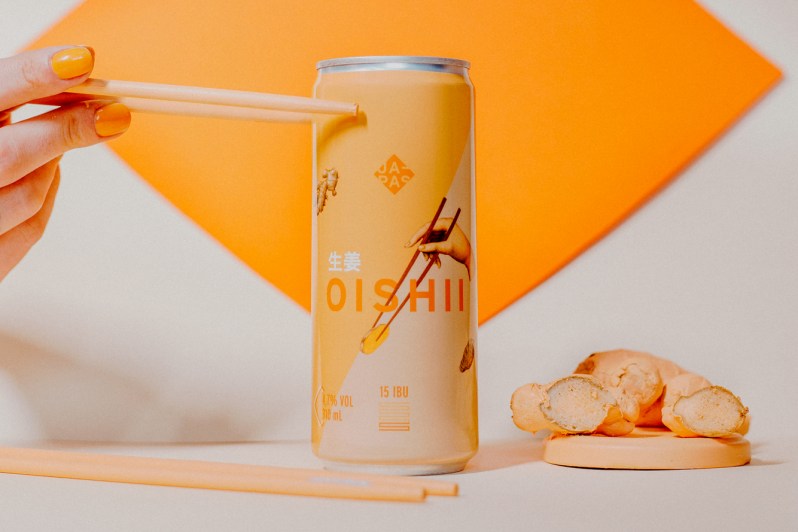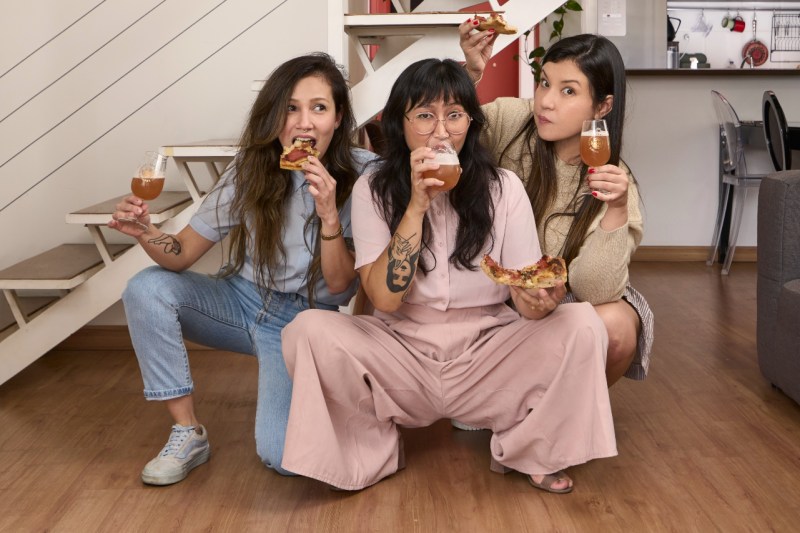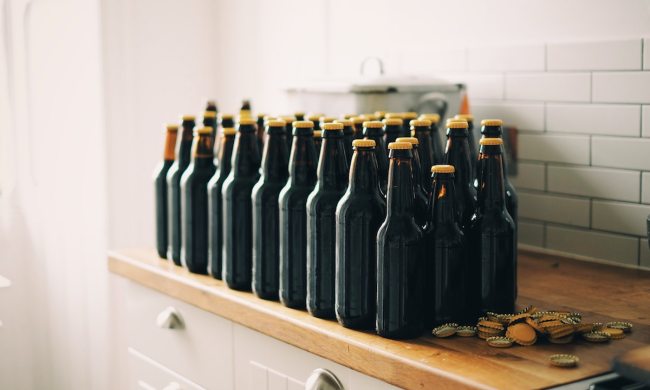Of the countless breweries in the craft beer scene , how many are women-run and blend the cultures of Japan and Brazil? The answer is not many as beer, like so many sectors, continues to be overly represented by white males. And that’s precisely what makes Japas Cervejaria extremely compelling. That, and the brand makes some downright tasty beer—with an aesthetic and flavor spectrum entirely its own.
The brewery launched in 2015, founded by three third-generation Japanese-Brazilians. The trio includes brewer and business strategist Maíra Kimura, creative direector Yumi Shimada, and brewer Fernanda Ueno. If you haven’t heard of them yet and you love beer, you likely will soon.

The beers are an homage to Japanese and Brazilian cuisine, featuring ingredients like ginger, yuzu, jasmine, and more. There’s a sour line called Sawā and some very creative others, like a refreshing witbier with orange peel and ginger and an IPA with blueberries and jabuticaba. They even make a matcha beer. It’s all a beer industry reflection of the sizable Japanese population that resides in Brazil (to the tune of 2 million people, it’s the largest outside of Japan itself). The beers are a nod to this culture and many of the ingredients—all natural—come from fellow Japanese-Brazilians in Brazil.
Meet the founders
Ueno says she’s always been close with craft beer, thanks to a father who was very much into the scene. She dabbled in architecture before studying food engineering, which led to many home brewing projects. She hasn’t stopped brewing since.
Kimura followed a similar trajectory, starting to brew at home around 2009. “In 2011 I went to England to learn how to brew professionally and took a technical course,” Kimura says. “In the same year, I also got my brewer’s certification from Institute of Brewing and Distilling.”
Shimada took a beer sommelier course in 2012, fascinated by craft’s boom. She started hitting festival and trade events (where she met her partners) and landed gigs doing artwork for breweries.
How Japas Cervejaria was formed
It all started with a beer called Wasabiru.
“We got together to brew a beer just for fun in 2014 and we brewed a 40-liter batch on a homebrewing system,” Ueno recalls. An American Pale ale was the base, a blank canvas on which to experiment with Japanese ingredients.
“When the beer was ready we all went to Yumi’s house in São Paulo to try it and everyone’s favorite was the version with Wasabi,” she says.
It was such a hit that a brewpub in the city invited the crew on to make an 800-liter batch. The release party was a huge success and the brand was born the following year.
In 2019, Japas Cervejaria began brewing in the states. They were able to do so by way of Beerternational, an innovative program that allows breweries from abroad to brew fresh batches of beer in the U.S. At the moment, several states carry the line and more should be following.
These things take time, especially when you’re dabbling in an industry commanded by white males historically, not to mention operating within serious supply chain shortages worldwide (especially hard on a brand that utilizes lesser-known, harder-to-find ingredients).

Building a brand
Shimada offers the word “resistance” when asked about navigating the landscape. “If it is difficult to have representation of women in the beer market, imagine what it feels like for Asian women, black women, trans, etc.,” she says. “Our role is to raise awareness not only for our empowerment within feminism and Asian causes, but also to embrace all kinds of diversity that are often excluded.”
They’ve teamed up with like-minded outfits and participate in festivals that support the greater cause, like Beers Without Beards and RIDEA Fest. They’ve outlasted the pandemic, limiting production briefly and getting creative by opening a gift shop featuring some outstanding swag. The beer crowd is starting to take notice and it feels like the momentum is back, if not building. Part of that will always have to do with having a sound narrative.
“We hope to keep always true to our history and stories, and to honor the ones that came before us,” Kimura says. “In this case, I mean our families and ancestors, but also the women that opened the way in so many ways throughout history, which allowed us to be here today. We’re always very clear about the fact that our brand is something that we’re building as we go, with the help of so many people. And we’re also trying to take a peek at the future, learning about new trends not only in the beverage industry but in a more global way.”
What’s next for Japas Cervejaria
What’s up and coming for the brand? Ueno says they’re working on a new Brazil-Japan line, with beers like ICHI/UM (a New England IPA with yuzu and cacao) and NI/DOIS, a Russian Imperial Stout with Brazilian vanilla and ponkan, or honey tangerine. “This is a way to show who we are through our beers,” she says.
There are many breweries in the states they’d love to collaborate with, along with non-beer brands too. “In short, we have fun when we see much more than beer,” Shimada says. “Our dream? Maybe some Japanese brands such as Asics, Mizuno, Sanrio, Uniqlo, etc.”
The beer is good and worth seeking out but the message is even more crucial. “It helps me to know my past and my family’s history, it’s where I can express my creativity in the best way and where I can see that we have a mission far beyond beer, but also in raising awareness for women empowerment, Asian pride and also embracing all kinds of diversity in an environment that still shows white and male dominance,” Ueno says.
The best news yet may just be this: Japas Cervejaria just completed a whirlwind tour of the U.S., delighting beer enthusiasts across the country with their work. Chances are good that their beers will be more widely available very soon. They have their sights on Texas and South Carolina, with hopefully more in the works.


